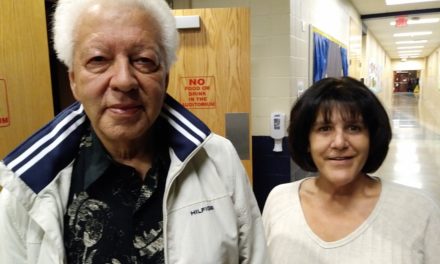
Kaitlyn Lang
Editor’s note: This story is part of a series on the 2022 inductees into the Brookfield Distinguished Alumni Hall of Fame.
In 2000, 1 in 150 children was considered to have autism spectrum disorder, according to the Centers for Disease Control. Today, the prevalence is 1 in 36 kids.
Yet, there is not a lot of general training for mental health professionals on autism, said Kaitlyn Nasci Lang, a 2004 Brookfield High School graduate and school psychologist for Edgewood City Schools in Trenton, Ohio.
“Even many of us with master’s degrees in various fields of education, you might get one course on it,” she said. “You might get a couple weeks on it in a chapter in your book. There’s not a lot of graduate school preparation for it.”
A child as young as 18 months can be diagnosed with autism, but in some cases a proper diagnosis is much harder, she said. It’s important to be able to differentiate autism from other disorders, she said.
“What previously might have been considered a social language or social communication impairment, when you start to look at other things like repetitive behaviors, unusual behaviors, different things that coincide with that, or unusual sensory functioning, you start to see those patterns and, when you look at the whole picture, you say, ‘Huh, that might actually be autism,’ and we’re looking at them through a different lens,” Lang said.
That’s why the Southwestern Ohio School Psychologists Association, an affiliate of the Ohio SPA, has emphasized training in autism, Lang said.
“Over the last about six years or so, there’s been a specialized interest in pursuit of advocacy for students with autism and working to help build the capacity of educators to identify autism in education, because it’s something that, there’s no blood test for it,” she said in a September interview. “You can’t have a blood test and say, ‘Yes, your student or your child has autism or does not have autism.’ That determination is made by looking at a lot of data and traits and features and characteristics.”
 As a school psychologist for grades seven and eight, Lang evaluates students to determine if they have educational disabilities, she said. She looks at IQ and achievement tests, interviews parents and teachers and collects data about social/emotional functioning to try and figure out what a student needs educationally and how adults can contribute.
As a school psychologist for grades seven and eight, Lang evaluates students to determine if they have educational disabilities, she said. She looks at IQ and achievement tests, interviews parents and teachers and collects data about social/emotional functioning to try and figure out what a student needs educationally and how adults can contribute.
Middle school is a challenging enough time anyway as a student starts to figure out where he or she belongs in the world, so it’s important to accurately assess whether there are mental health or developmental issues imbedded in those challenges, she said.
“It goes back to the data,” Lang said. “You start to look at, are there patterns in the data that identify trends? Is there a family history of anxiety or depression or other disorders that could be relevant and at play? Are there medications being prescribed?”
Lang likes to reach out to the most difficult students, which she defined as “The ones where they will have shutdowns in the classroom. They will tell everybody to go away.”
She said she has established good relationships with some of these students and has become a “safe person” to them.
“If they want to have a meltdown in my office, they’re not gonna be in trouble,” she said. “If they need to use profanity, I let it go, because they need to be out of the classroom when that’s gonna happen and they need to be in a safe space where they can get that out, and then we can process it.”
“I love it, and it’s definitely a challenge, and I will say, every day, I do not feel successful all day long,” she said of her job, adding that she constantly asks herself how she can be better at it.







